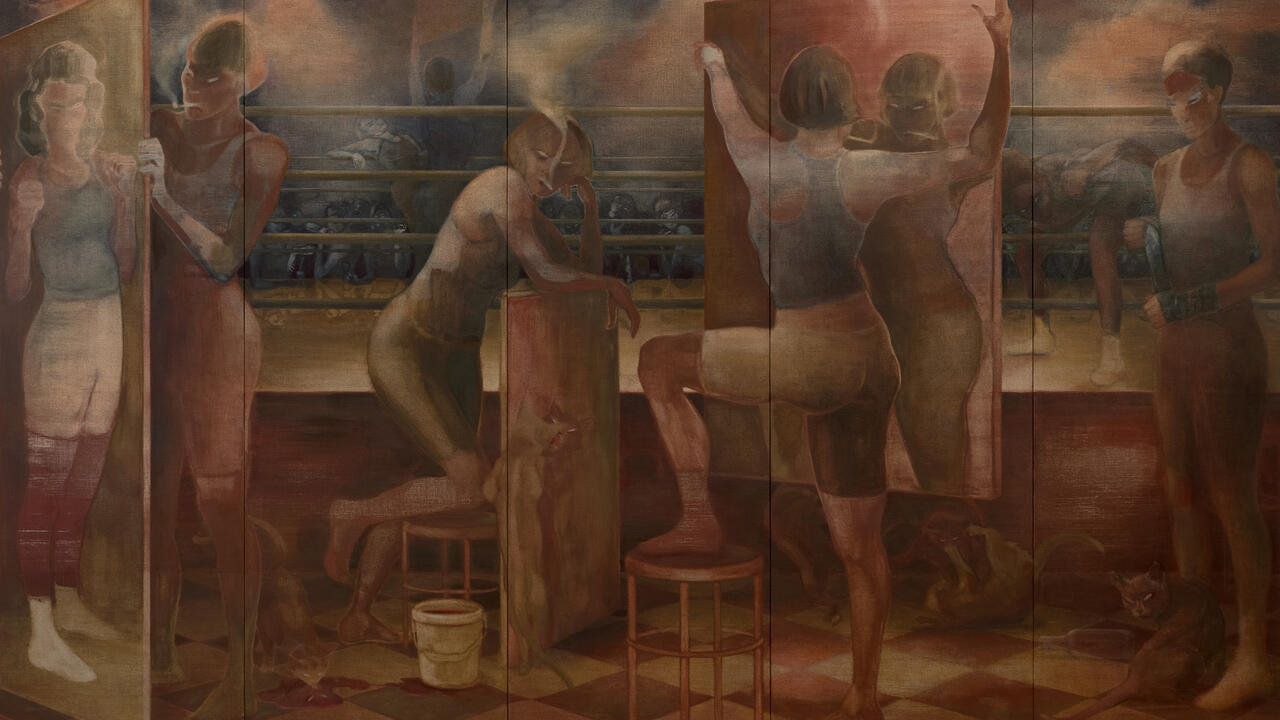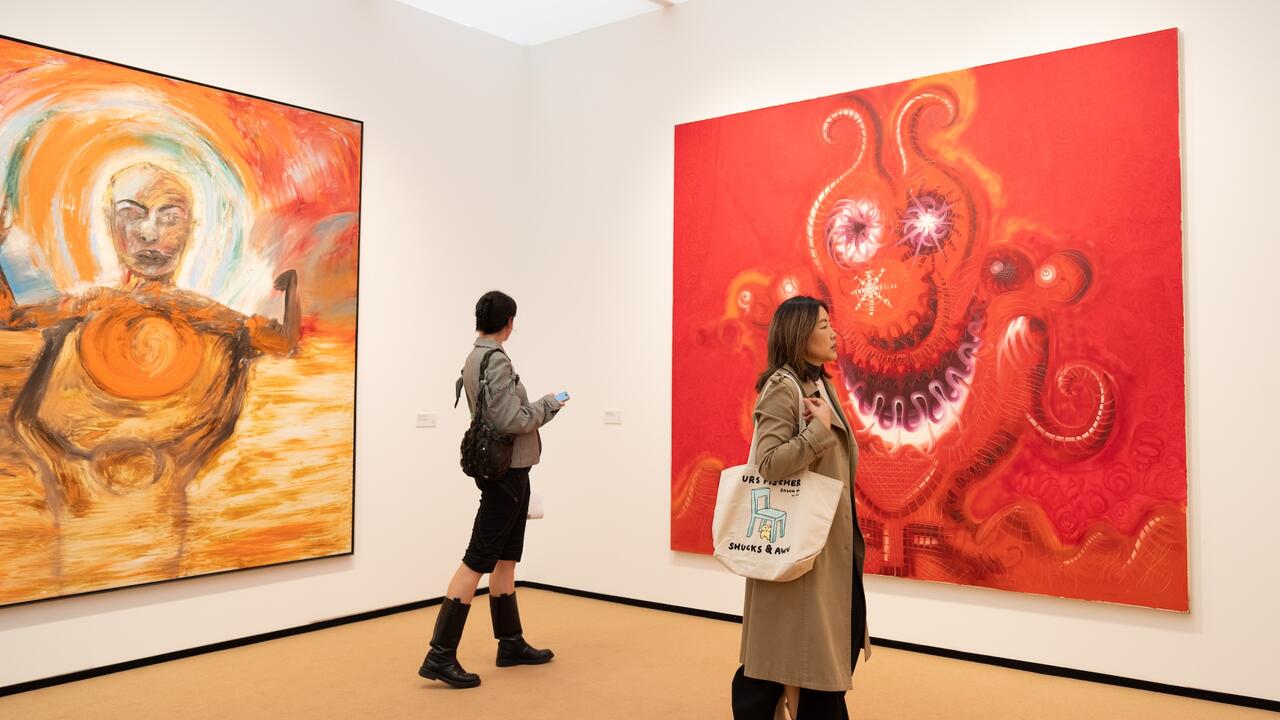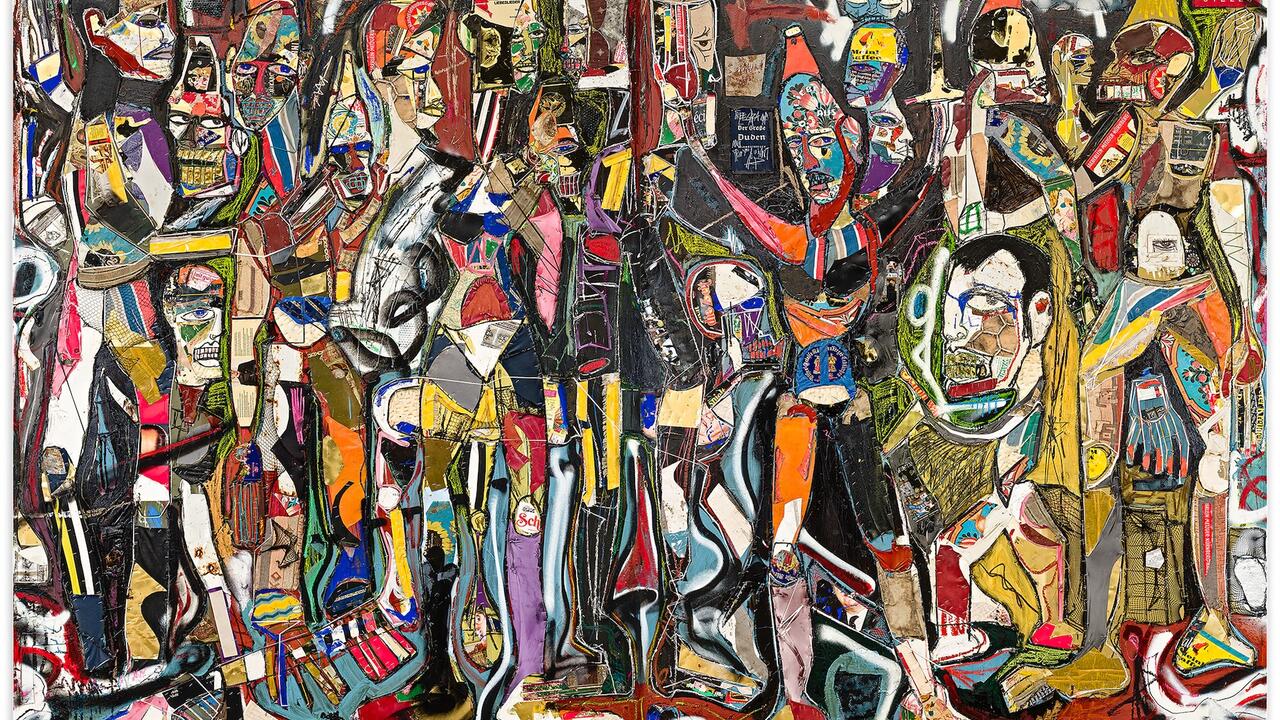John Currin
Sadie Coles, HQ, London, UK
Sadie Coles, HQ, London, UK

It was the mittens that did it for me. They're like fat, springy boxing gloves, and as unexpected as a couple of friendly table tennis bats pinned to an evening gown. There's no question about it, they're attention-grabbers, gracing the hands of a woman who, (as with every woman in this absurdly likeable show), looks like a laughing Botticelli angel with a heal-thy relationship to Martinis, fresh air and credit cards. She's dressed in one of those really plain coats that cost a fortune, her long neck and delicate head casually wrapped in a white scarf which - thanks to the skill with which it's painted - you know is cashmere, while the mittens are made from that brand of thick, homespun wool which repels the rain and still smells faintly of sheep. Her pale red hair peeps merrily out from beneath her scarf. It looks freshly washed and is probably faintly fragrant. The title of the painting, The Cuddler (all work 2000), is so weirdly apt, it's creepy. This is the first picture in a long time that's made me laugh out loud.
Which is appropriate, because these new paintings by John Currin (no boobs!) are filled with people smiling and laughing, and going about their business with a charming, cheeseball, occasionally cruelly observed exuberance that makes you want to, if not join in, then a least sit in a corner and watch. You feel you know these types - there's definitely something familiar about the way one girl laughs a little too loudly and clutches her drink a little too tightly; the way an old roué combs his hair; the thrilled expression on the face of a middle-aged woman holding an object she wants to buy; the evident, simple pleasure of a couple making pasta. That said, Currin's powers of observation are too sharp to allow the people who populate his pictures to be reduced to approximations. Beneath their slightly unnerving geniality, his subjects are so full of character and enigmatic nuance, the more you look at them, the more complicated and interesting they become. For all their hilarity, the paintings seem to be about the way subtle things and situations separate people from one another - how confused we are about whether or not to disclose or withhold the things we're thinking about, and how the desire to touch or be touched can be subsumed into a cruder form of communication than the one you really crave. In other words, they're paintings about appearances, and how appearances let thoughts and feelings leak onto their surfaces.
And what surfaces they are. The ubiquity of laughter lends the paintings an air of spontaneity which is dispelled the moment you look at how painstakingly they've been made. They remind me of 17th-century Dutch still-life paintings in which artists attempted to represent as many surfaces a possible in order to show off their skills. In The Consignment Shop, for example, which depicts a woman and a young man admiring a vase, Currin has managed to render, with utter, oddball naturalism, flesh, hair, silk, lace, glass, ceramic and a painted wall, all of which jostle harmoniously together in a song of a picture that changes key every bar. Park City Grill is another virtuoso turn: a laughing, deeply sleazy man with the kind of smiling mouth that is shaped to call a woman 'babe', clinks wine glasses with a thin, golden, slightly hysterical girl. Behind them, a bowl of pink, velvet flowers almost dissolves into the air. I don't know of anyone who paints a better pink at the moment. It's a dusty, faded, romantic, kind of obscene pink, like a subliminal insinuation of flesh. His browns and yellows and beiges are almost as good, if a little sadder, as if they've been glazed in sepia.
Although the paintings are, to a certain extent, satirical, their finely-spun, unexpected beauty is more reminiscent of the bonkers Mannerism of someone like Jacopo Pontormo than anything from the last century, except, perhaps, Norman Rockwell's suburban hallucinations. They certainly don't seem to care about Modernism, or meaning, or convincing anyone of anything that you can't work out with your own eyes. Such unabashed, unapologetic enthusiasm for his subject makes Currin's paintings a lot of fun to look at. And despite the fact that his powers of observation are occasionally so acute as to be a little mean, it's a meanness tempered with laughter and, dare I say, affection. You get the sneaky feeling Currin wouldn't mind going out for a drink with the people he paints. It's a nice thought. It'd be a weird evening, but it wouldn't be boring.






















